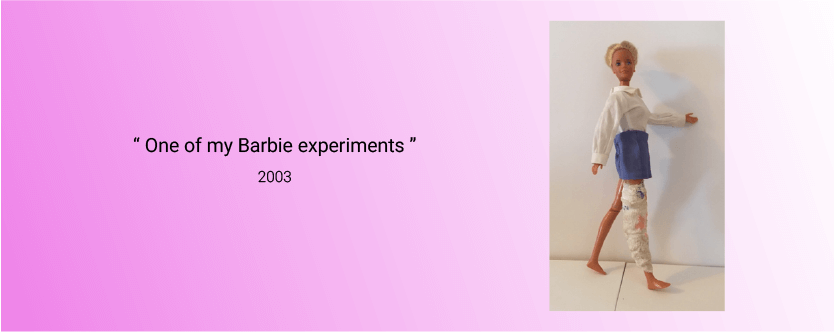Biodesign Challenge Part 1: Why Biodesign?

One of the most exciting aspects of being at the forefront of synthetic biology is the opportunity to support a new and growing community of Biodesign.
The Biodesign Challenge connects art and design students with biologists to envision and develop future applications of biotechnology. They tackle subjects like architecture, energy, communication, and transportation. Twist Bioscience has been a sponsor of the organization since its inception in 2016.
We asked Marian Shaw a participant of the BioDesign Challenge from NYU, to share some of her thoughts, interests, and inspirations in a two part blog series.
Ever since I was little, the world of biology enthralled me. At age five, rather than dressing my Barbie dolls in denim skirts and sparkly tube tops, I disassembled them, then mended their limbs with homemade plaster. I was fascinated with how each body part amalgamated into a miniature human being.

Concern occasionally intertwined with my awe for biology. After seeing a cloned cow at the Minnesota state fair, I repeatedly inquired about the scientific process, which to be fair does not at all lend itself to cloning a human. Such mysteries and wonders of the world propelled me from Minneapolis to New York to study Chemical and Biomolecular Engineering at New York University Tandon School of Engineering. Here I am completing my junior year.
When I was a freshman, I explored designs that harness nature’s ingenuity, capturing my imagination. From Suzanne Lee's clothes made from microbial cellulose to Neri Oxman’s Silk Pavilion, biologically-inspired design took hold of my mind.


I found this intimate intersection of art, design, science, and engineering inspiring, promising, and essential. Yet it was missing from my formal undergraduate education. I recognized the value of combining these disciplines in my printmaking class where I was able to reflect visually on my lab experiences. It was a different way of making observations than meticulously notating a lab notebook. The process offered me a refreshing and intimate view into science.

From there I began researching nature-inspired design and serendipitously stumbled onto Genspace, an open access lab in Brooklyn, and Biodesign Challenge (BDC), an international competition that invites students to ponder the future of biotechnology. The organizations’ founder, Daniel Grushkin, and program manager, Alison Irvine graciously welcomed me into their community, spurring me on in my knowledge and experiences.
At Genspace, I assisted in classes ranging from bioinformatics to biotextiles. I gained hands-on experience while fostering passion for biodesign and citizen science in others.

While I was an intern at BDC last year, I created a bibliography of readings for classes in the Challenge. Nearly 170 annotations later, my understanding of and passion for biodesign has stretched to new limits. In J. G. Ballard’s “Say Goodbye to the Wind,” I encountered a world in which clothes are alive and responsive to their surroundings. In articles on Henrietta Lacks, I learned about medical ethics and the importance of consent and reciprocity. My mind wandered from the speculative to the all-too-real narratives of biodesign. I envisioned being on the other side of this bibliography: reading about bioart, biosecurity, gene editing (the list goes on), and letting their messages inform, inspire, and accelerate a meaningful biodesign project of my own.

A favorite passage from “Say Goodbye to the Wind”
This year I enrolled in a class registered in BDC 2018. It’s a graduate course at NYU’s Interactive Telecommunications Program (ITP) called “BioDesigning the Future of Food” taught by the brilliant artist Stefani Bardin. Here, I am collaborating with students from different disciplinary backgrounds. I am meeting and/or learning about artists, designers, and scientists, doing phenomenal biodesign work.
Through BDC and this class, I continue to discover subtle ways in which nature can inform us, and understand how we can and should achieve harmony with it to create a better world.
What did you think?
Like
Dislike
Love
Surprised
Interesting